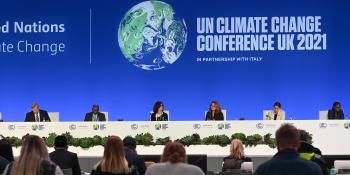Chocolate? Sure, as long as it’s 55% shade

New research on cocoa production in Brazil finds that producers can significantly increase yields through appropriate fertilizer applications while retaining above-ground carbon stocks with large shade trees and up to 55% shade.
Brazil was once among the world’s main cocoa producers, but yield levels have declined in the 1990s due to a combination of agronomic and socioeconomic problems. In southern Bahia, Brazil’s principal cocoa production region, cocoa is produced in traditional shaded cocoa agroforests, where cocoa trees grow under the shade provided by native and introduced forest and fruit trees.
These traditional production systems, called Cabrucas, not only help sustain the exceptional biodiversity of this part of the Brazilian Atlantic forest despite its highly fragmented and much reduced natural forest cover, but are also climate friendly: according to a recent estimate they contribute 59% to the total carbon stocks in the region’s tree vegetation, while natural forest remnants are responsible for only 32%.
However, due to a combination of extensive management practices and high disease pressure, average cocoa yields for southern Bahia in 2010 were much lower than in major African cocoa-producing countries. As a result, Brazil has been obliged to import cocoa, and the income from cocoa in the region can quickly fall below the legally stipulated minimum salary when cocoa prices decline.
There is therefore strong pressure to intensify cocoa production and increase the incomes of the rural population while also meeting the needs of the national cocoa industry.
But what does cocoa intensification imply?
Intensification in cocoa production is often seen as almost synonymous to increasing agrochemical (especially mineral fertilizer) use – which may be necessary if limited fertility soils have been under cocoa production for many years – and reducing shade by pruning or cutting trees. The question is whether this can be done without undermining the climate friendliness of the production.
The good news is that a recent study by Schroth et al. found that a substantial productivity increase over the current regional baseline can be achieved while retaining climate friendly characteristics, defined as a combination of high standing carbon stocks and a low carbon footprint.
Better still, the authors showed that regional average cocoa yields can be at least doubled while maintaining a low input-related carbon footprint (from on-farm agrochemical and fuel use), a shade level of up to 55%, and an above-ground carbon stock in large shade trees of up to 65 tons per hectare, a fairly high value by international standards.
Although the exact thresholds of climate friendliness will most likely be site and crop specific, the study provides a practical framework for the climate-friendly intensification of traditional cocoa farms of southern Bahia and shows the way to determining quantitative thresholds of climate-friendliness for other regions and crops. The same method could be used with a little adaptation to other local conditions.
Private sector potential to reduce carbon footprint
Private companies interested in reducing their corporate carbon footprint have the potential to utilize this quantitative method for marketing biodiversity- and climate-friendly cocoa and chocolate from this traditional production system. Governments could also build on this research to provide incentives for the green intensification of traditional cocoa production in southern Bahia and elsewhere.
However, owing to a combination of extensive management practices and high disease pressure, average cocoa yields for southern Bahia in 2010 were much lower than in major African cocoa producing countries. As a result, Brazil has for some years now been obliged to import cocoa, and the income from cocoa in the region can quickly fall below the legally stipulated minimum salary when cocoa prices decline.
There is therefore strong pressure to intensify cocoa production and increase the incomes of the rural population while also meeting the needs of the national cocoa industry.
But what does intensification imply?
Intensification in cocoa production is often seen as almost synonymous to increasing agrochemical use (especially mineral fertilizers) – which in fact may be necessary if soils of naturally limited fertility have been under cocoa for many years – and reducing the shade by pruning or cutting trees. The question is whether this can be done without undermining the climate friendliness of the production.
The good news is that a recent study by Schroth et al. has found that there is no inherent contradiction between a substantial productivity increase over the current regional baseline and climate friendliness, defined as a combination of high standing carbon stocks and a low carbon footprint.
Better still, the authors showed that regional average cocoa yields can be at least doubled while maintaining a low input-related carbon footprint (from on-farm agrochemical and fuel use), a shade level of up to 55%, and an aboveground carbon stock in the large shade trees of up to 65 tons per hectare, a fairly high value by international standards.
Although the exact thresholds of climate friendliness will most likely be site and crop specific, the study provides a practical framework for the climate-friendly intensification of traditional cocoa farms of southern Bahia and shows the way to determining quantitative thresholds of climate-friendliness for other regions and crops. The same method could be used with a little adaptation to the specific local conditions.
Hopefully, private companies interested in reducing their corporate carbon footprint will see the potential of this quantitative method for marketing a special kind of biodiversity and climate-friendly cocoa and chocolate from this traditional cocoa origin. Government could also build on this research to provide incentives for the green intensification of traditional cocoa production in southern Bahia.
- See more at: http://www.ciatnews.cgiar.org/2014/06/16/chocolate-sure-as-long-as-its-…
Stephanie Neno is the public awareness coordinator at the International Centre for Tropical Agriculture (CIAT)



